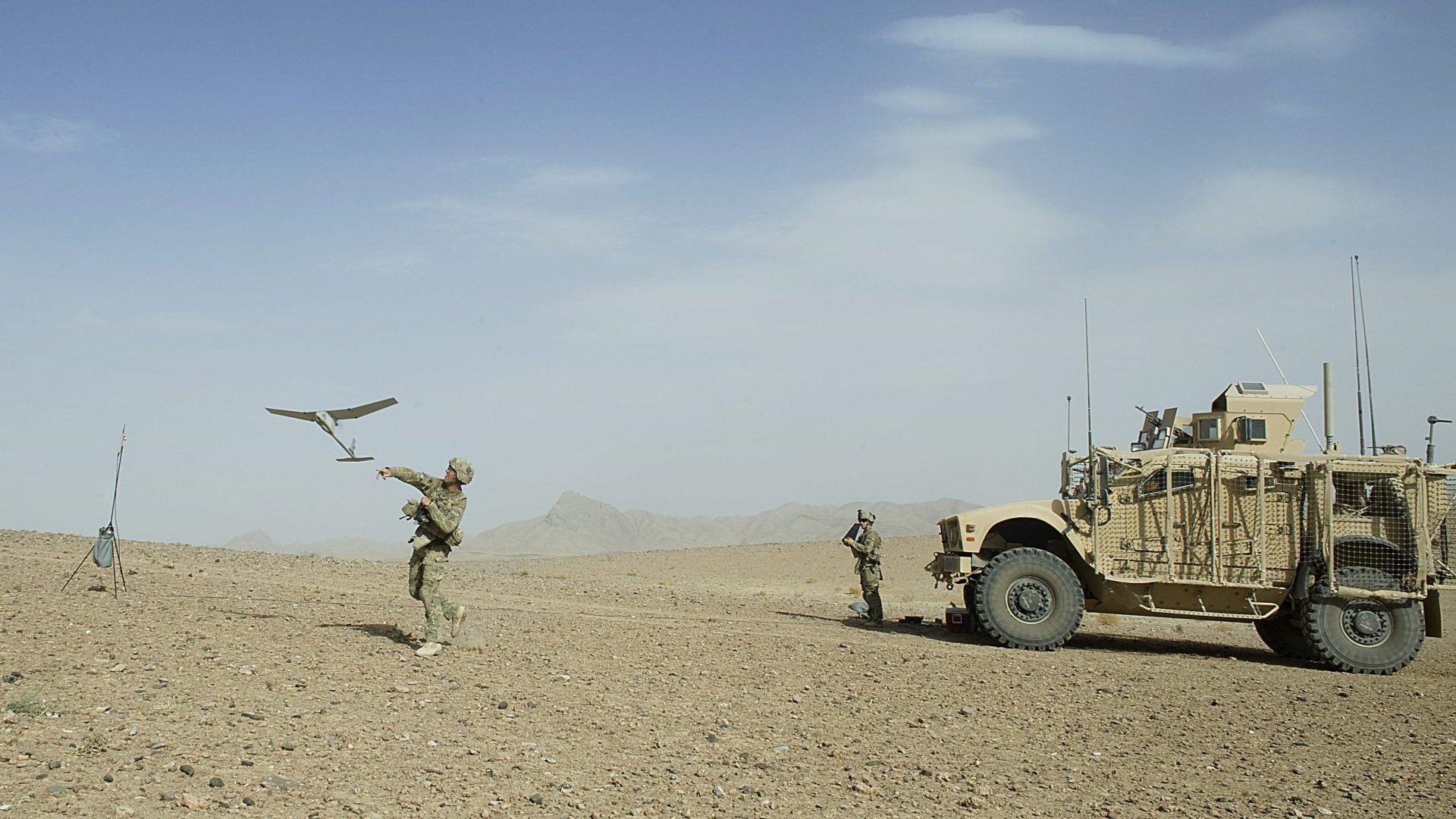On October 29, seven unmanned Ukrainian boats attacked the Russian navy off Sevastopol. One is reported to have damaged the Russian flagship, the frigate Admiral Makarov. The event could be a turning point in naval warfare, and may have far-reaching consequences for all navies, including our own.
To get a sense of the revolution that’s under way, consider the cost disparities. The Admiral Makarov was launched in 2017 and, if built in the West, could have cost up to a billion dollars. She is equipped with sophisticated radars, jammers, sensors and digital fire-control systems, needing a crew of 200 to operate.
The naval drone that attacked her was basically a £22,000 jet-ski with a one-tonne bomb welded to the front of it. The total cost of making it was probably less than £90,000. Controlled remotely, possibly via the Starlink commercial satellite system, its only sensors seemed to be a camera and a detonator.
Even if it took seven of these things to damage one frigate, the implications for naval warfare could be profound.
In theory, a warship has the means to see and easily destroy something as crude as an unmanned surface vehicle (USV). Indeed, footage from one naval drone shows it being attacked – and probably destroyed – both by a helicopter and the Makarov’s cannon.
But the fact remains that, facing drone attacks both from the air and the sea, the ship’s defences were overwhelmed. The Russian navy discovered what drone warfare is teaching everyone who experiences it: that a swarm of low-tech things can defeat one high-tech thing, with profound consequences for the outcome of conflict.
In Nagorno-Karabakh in 2020, where Azerbaijan deployed aerial drones manufactured by Turkey, the well-trained and equipped Armenian army simply stopped fighting – because their supply columns couldn’t move and their tanks couldn’t hide.
In Ukraine, we’re seeing both sides deploy unmanned aerial vehicles (UAVs) with similarly game-changing effects. The Ukrainians are using commercial drones to guide precision artillery strikes; the Russians are using Iranian military drones to overwhelm Ukraine’s air defences and degrade the electricity grid.
The outcomes are hard enough to calibrate for those commanding troops in real time. But it’s even harder for those who have to plan defence procurement. They – and the politicians they answer to – are asking: has the era of the tank passed? And if not, what do tanks have to look like, and should they, too, be remote-controlled?
And now, suddenly, those who design and build warships are having to ask the same kind of existential questions.
The UK is building eight new frigates in Glasgow and five more in Rosyth. The job of these ships is to protect the aircraft carriers and nuclear-armed subs that Britain relies on for its global power.
The Royal Navy’s unmanned surface vessel programme, meanwhile, is in its infancy. It has just bought three small, unmanned submarines and invited bids to build a big one. But the kind of thinking that straps a bomb to a jet-ski is not how procurement currently works.
Since the days of ancient Greece, navies have been shaped around the hierarchy needed to run a ship, and the discipline needed to bring a fleet of ships together to fight.
But we may, now, be approaching a moment where human beings and machines part company at sea, both in terms of physical presence and even control.
We’re already in a world of semi-autonomous weapons: the missiles that ships carry in order to sink each other are in effect “fire and forget”; the computers that control anti-aircraft missiles can sort through targets and prioritise them, without the intervention of a human being.
The next phase of naval warfare might evolve from the crude, human-controlled swarm attack seen at Sevastopol, towards what’s already happening in the air: machines programmed to “loiter” and attack anything that looks like a legitimate target.
The ethical implications of autonomous weapons have been well rehearsed. Their defenders cite the impossibility of human error, or deliberate cruelty; opponents say it’s immoral to invent a machine that could kill human beings on its own decision.
But before we get to this stage, there’s the much more prosaic question: should we rethink the naval building programme from scratch – anticipating a decade or more of uncertainty as the Ukraine conflict generates new kinds of machines, tactics and control methods, at sea, in the air and even in space?
These are questions it is hard for people in power even to ask. In the digital era, the typical product innovation cycle for a tech business is 18 months. In the military, it can take years.
In business we long ago learned to “stand to the side”, not just of machines but complex systems and processes; using the human brain to monitor, learn and innovate from the data produced.
In the military, this might involve learning to think about swarms instead of platforms. And it will certainly mean learning to be a customer for a machine you cannot yet imagine, from a company or designer you have never heard of.
That was the effect of the first naval engagement of the modern era, in March 1862, when the American Confederacy’s ironclad steamer ravaged the Union’s wooden-hulled navy at Hampton Roads.
The immediate implications were obvious: navies would become steam powered and ships would henceforth be made of metal. The more strategic implication took time to sink in: countries that could make a lot of metal, and dig a lot of coal, would be more powerful than those that couldn’t.
If we do stand at a similar moment today that lesson is worth updating. Countries that can innovate with a mixture of digital comms, cloud data and artificial intelligence – needing a vastly different set of skills to those common in today’s militaries – are going to be more secure than those that stick, metaphorically, to their knitting.




